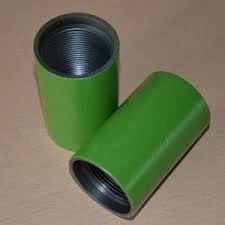- Afrikaans
- Albanian
- Amharic
- Arabic
- Armenian
- Azerbaijani
- Basque
- Belarusian
- Bengali
- Bosnian
- Bulgarian
- Catalan
- Cebuano
- Corsican
- Croatian
- Czech
- Danish
- Dutch
- English
- Esperanto
- Estonian
- Finnish
- French
- Frisian
- Galician
- Georgian
- German
- Greek
- Gujarati
- Haitian Creole
- hausa
- hawaiian
- Hebrew
- Hindi
- Miao
- Hungarian
- Icelandic
- igbo
- Indonesian
- irish
- Italian
- Japanese
- Javanese
- Kannada
- kazakh
- Khmer
- Rwandese
- Korean
- Kurdish
- Kyrgyz
- Lao
- Latin
- Latvian
- Lithuanian
- Luxembourgish
- Macedonian
- Malgashi
- Malay
- Malayalam
- Maltese
- Maori
- Marathi
- Mongolian
- Myanmar
- Nepali
- Norwegian
- Norwegian
- Occitan
- Pashto
- Persian
- Polish
- Portuguese
- Punjabi
- Romanian
- Russian
- Samoan
- Scottish Gaelic
- Serbian
- Sesotho
- Shona
- Sindhi
- Sinhala
- Slovak
- Slovenian
- Somali
- Spanish
- Sundanese
- Swahili
- Swedish
- Tagalog
- Tajik
- Tamil
- Tatar
- Telugu
- Thai
- Turkish
- Turkmen
- Ukrainian
- Urdu
- Uighur
- Uzbek
- Vietnamese
- Welsh
- Bantu
- Yiddish
- Yoruba
- Zulu
Understanding Casing and Tubing Connections in Oil and Gas Industry Applications
Casing and Tubing Connections An Overview
Casing and tubing connections are crucial components in the oil and gas industry, serving as the backbone of well integrity and functionality. These connections are essential for transferring fluids safely and efficiently from the reservoir to the surface while providing structural support to the wellbore. Understanding the various types of connections and their applications is vital for engineers and technicians working in drilling and production operations.
Casing refers to the series of pipes that are placed into a drilled well to maintain its stability. It prevents collapse from surrounding rock and avoids contamination of groundwater. Casing materials are often made from high-strength carbon steel, and their connections come in various forms, such as threaded, welded, and slip-on. The selection of the appropriate casing connection depends on factors such as the well's depth, the type of formation, and the pressures and temperatures encountered.
Tubing, on the other hand, is the smaller diameter pipe inserted into the casing, enabling the flow of hydrocarbons to the surface. Tubing connections must handle the high-pressure environment within the well, which necessitates a robust design. Common types of tubing connections include butt-welded, threaded, and coiled tubing connections. Each type has its strengths and weaknesses regarding ease of installation, leak prevention, and the ability to withstand harsh environmental conditions.
casing and tubing connections

One of the key challenges in managing casing and tubing connections is ensuring their integrity over the life of the well. Corrosion, wear, and mechanical issues can all compromise the strength of these connections, leading to potential failures. Advanced inspection techniques, such as ultrasonic testing and magnetic particle inspection, are critical for identifying defects in casing and tubing connections. Additionally, the use of high-quality materials and innovative connection designs can greatly enhance the durability and reliability of these components.
In recent years, the industry has seen significant advancements in connection technologies. The introduction of premium connections offers enhanced performance, particularly under extreme conditions. These connections have been designed to provide better resistance to bending and tensile forces, preventing leaks and enhancing overall well integrity.
In conclusion, casing and tubing connections are fundamental to the safety and efficiency of oil and gas operations. With ongoing developments in technology and materials, the performance and reliability of these connections are set to improve, further ensuring the safe extraction of hydrocarbons from deep beneath the Earth's surface. As the industry continues to evolve, staying updated on the latest connection technologies and best practices is essential for professionals in the field.
-
Tubing Pup Joints: Essential Components for Oil and Gas OperationsNewsJul.10,2025
-
Pup Joints: Essential Components for Reliable Drilling OperationsNewsJul.10,2025
-
Pipe Couplings: Connecting Your World EfficientlyNewsJul.10,2025
-
Mastering Oilfield Operations with Quality Tubing and CasingNewsJul.10,2025
-
High-Quality Casing Couplings for Every NeedNewsJul.10,2025
-
Boost Your Drilling Efficiency with Premium Crossover Tools & Seating NipplesNewsJul.10,2025







